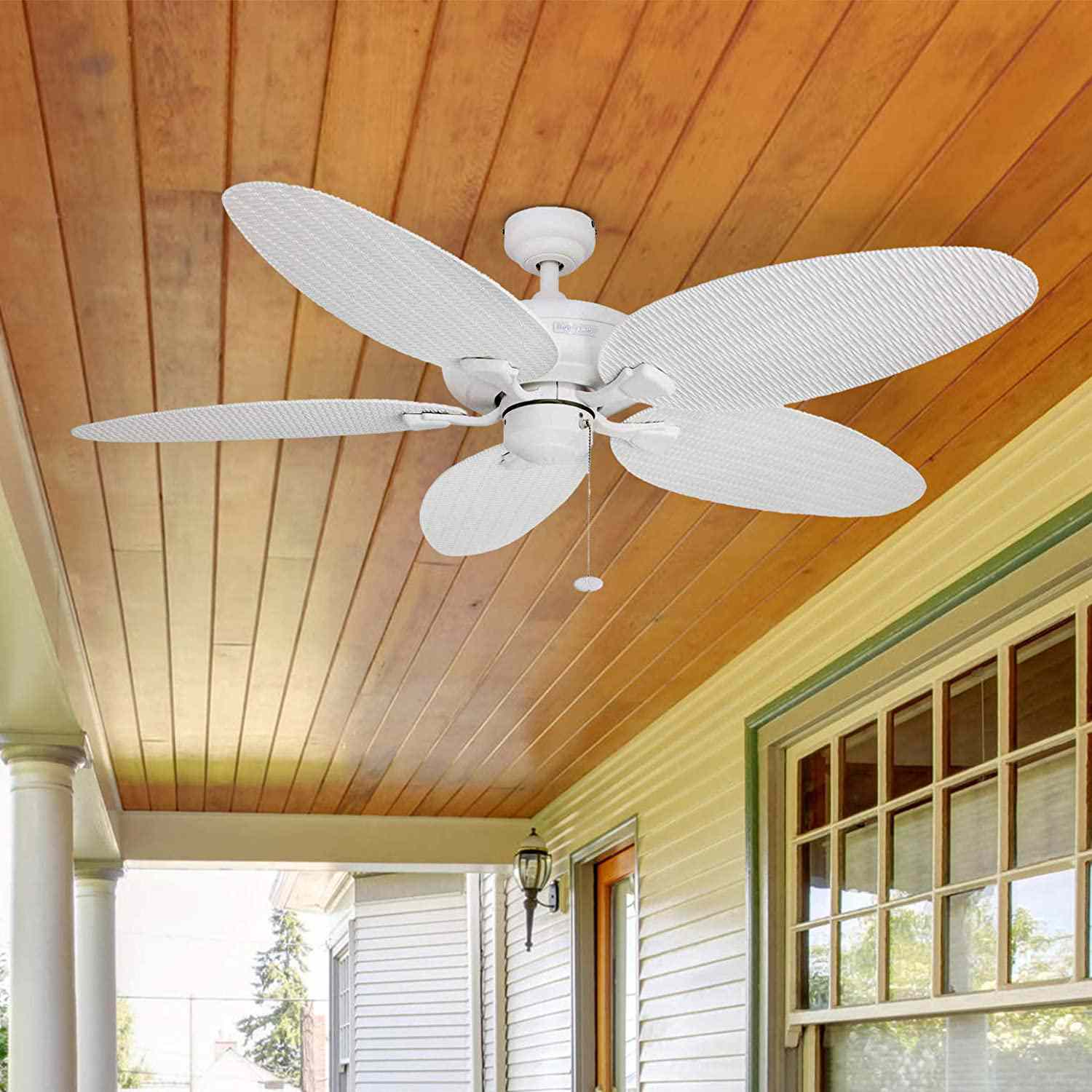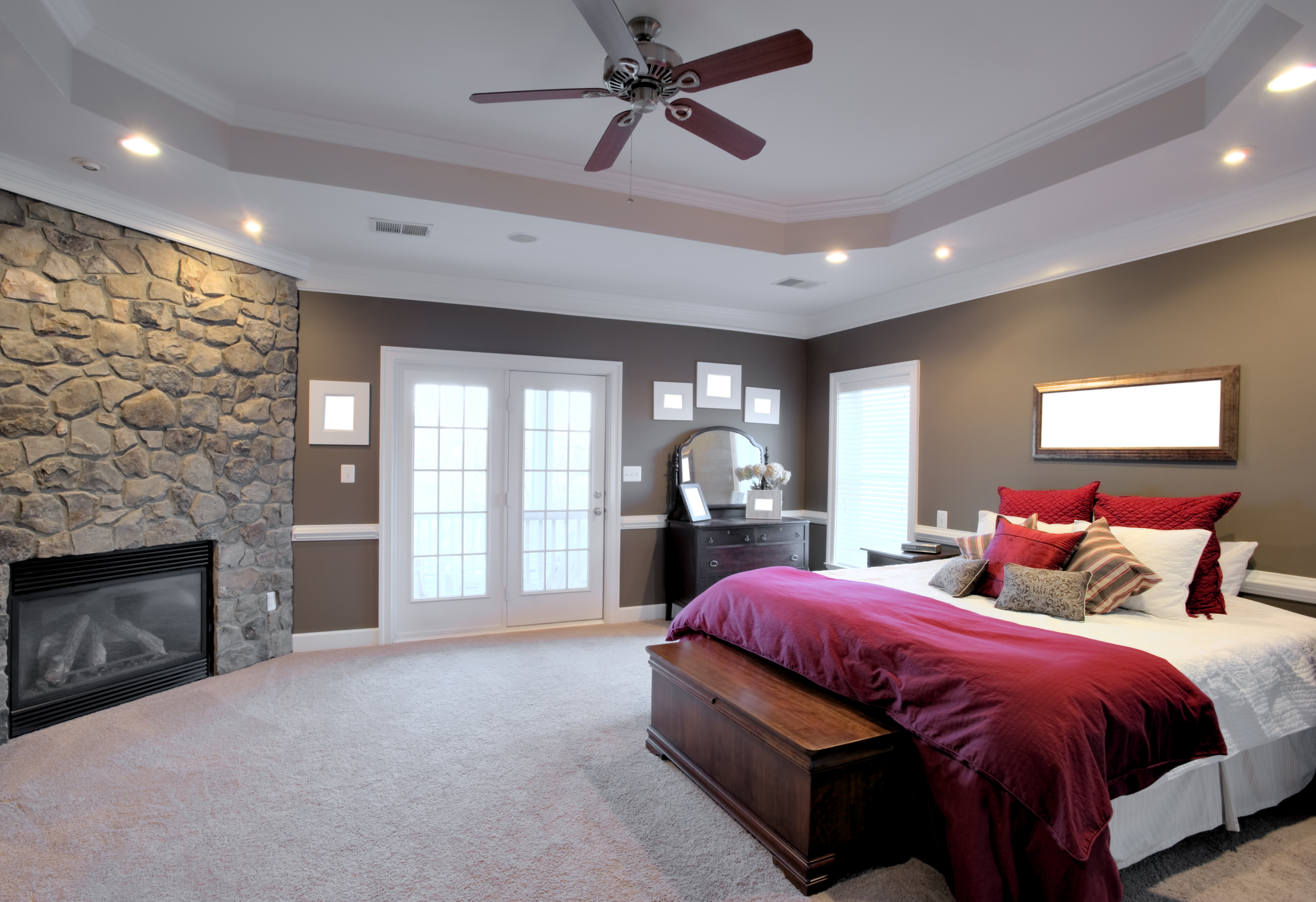Home>Articles>What Ceiling Fan Size Is Best For A Living Room


Articles
What Ceiling Fan Size Is Best For A Living Room
Modified: January 7, 2024
Find out what size of ceiling fan is best for your living room with our informative articles. Make sure you choose the right fan for optimal comfort and air circulation.
(Many of the links in this article redirect to a specific reviewed product. Your purchase of these products through affiliate links helps to generate commission for Storables.com, at no extra cost. Learn more)
Introduction
Choosing the right size ceiling fan is crucial when it comes to creating a comfortable and inviting living room. A ceiling fan not only helps to circulate air and keep the room cool, but it also adds a stylish element to the space. However, with a wide range of ceiling fan sizes available on the market, it can be challenging to determine which one is best suited for your living room.
Factors such as the size of the room, ceiling height, and personal preferences all play a role in determining the ideal ceiling fan size. In this article, we will explore the different factors to consider when choosing a ceiling fan size for a living room, as well as the options available in small, medium, and large fan sizes.
By understanding the considerations involved in selecting the right size ceiling fan for your living room, you can make an informed decision and create a more comfortable and visually appealing space.
Key Takeaways:
- Choose the right size ceiling fan for your living room by considering factors such as room size, ceiling height, and style preferences. Small, medium, and large fans offer different benefits based on your specific needs.
- Look for energy-efficient, quiet, and stylish ceiling fans that match your living room’s decor. Consider factors like blade material, motor quality, and ease of installation to ensure optimal performance and comfort.
Factors to Consider When Choosing a Ceiling Fan Size for a Living Room
When it comes to selecting the right ceiling fan size for your living room, there are several important factors to consider. These factors will ensure that the fan you choose not only fits the space aesthetically but also functions optimally.
1. Room Size: The first and most crucial factor to consider is the size of your living room. Measure the length and width of the room and use these measurements to determine the appropriate fan size. As a general rule, for rooms up to 75 square feet, a fan with a blade span of 29 to 36 inches is suitable. For larger rooms ranging from 76 to 144 square feet, fans with blade spans of 36 to 42 inches are recommended. Rooms measuring 144 to 225 square feet require a fan with a blade span of 44 to 50 inches, while rooms over 225 square feet may benefit from a fan with a blade span of 52 inches or more.
2. Ceiling Height: The height of your ceiling is another important consideration. For standard ceilings (8 to 9 feet high), most ceiling fan sizes will work well. However, if your ceiling is higher than 9 feet, you will need to consider a downrod extension to lower the fan to an appropriate height for optimal air circulation.
3. Fan Style: The style and design of the fan should also be taken into account. Consider the overall aesthetics of your living room and choose a fan that complements the existing decor. From sleek and modern designs to more traditional or rustic options, there is a wide range of fan styles available to suit various interior styles.
4. Room Functionality: Think about how you use your living room. If the room is frequently occupied by a large number of people or if it is located in an area with a hotter climate, you may want to opt for a larger fan with a higher airflow capacity to ensure efficient cooling.
5. Noise Level: The noise level produced by the fan is also worth considering, especially if the living room is a place where you spend a significant amount of time. Look for fans with quiet motors or consider models with adjustable speed settings to reduce noise when desired.
By considering these factors, you can narrow down your options and choose a ceiling fan size that not only fits the dimensions of your living room but also delivers the desired functionality and style.
Small Ceiling Fans
Small ceiling fans are ideal for compact living rooms or rooms with limited ceiling space. These fans typically have a blade span ranging from 29 to 36 inches, making them suitable for rooms up to 75 square feet in size.
Despite their smaller size, small ceiling fans can still provide effective air circulation and cooling. Some models are equipped with multiple speed settings and reversible airflow, allowing for year-round use. The compact design of these fans also makes them an excellent choice for rooms with lower ceilings, as they don’t protrude too far down.
When it comes to style, small ceiling fans come in a variety of designs to suit different decor themes. From sleek and modern to more traditional or rustic, you can find a small fan that complements your living room’s aesthetic.
It’s important to note that while small ceiling fans are suitable for smaller rooms, they may not provide sufficient airflow in larger or more open living spaces. If your living room exceeds 75 square feet or has high ceilings, you may need to consider medium or large ceiling fan sizes for optimal performance.
Overall, small ceiling fans are a practical and space-saving option for smaller living rooms. They offer efficient air circulation, cooling, and style without overpowering the room or compromising on functionality.
Medium Ceiling Fans
Medium-sized ceiling fans are a versatile choice for living rooms that fall between the small and large size categories. With blade spans ranging from 36 to 42 inches, these ceiling fans are suitable for rooms measuring between 76 and 144 square feet.
Medium ceiling fans offer an excellent balance between airflow capacity and room coverage. They provide sufficient air circulation to keep the living room cool and comfortable without overpowering the space.
One advantage of medium ceiling fans is that they are compatible with a variety of ceiling heights. Whether you have standard 8-foot ceilings or higher ceilings, these fans can be adjusted using downrod extensions to achieve the optimal hanging height for efficient airflow.
In terms of style, medium ceiling fans come in a wide range of designs to match any living room decor. From contemporary and minimalist to classic and ornate, you can find a medium-sized fan that seamlessly blends with your interior theme.
Many medium ceiling fans also come equipped with additional features such as remote controls, light fixtures, and reversible motor functionality. These features add convenience and flexibility to the fan’s operation.
Medium-sized ceiling fans are particularly well-suited for average-sized living rooms. They offer the right balance of functionality, style, and coverage, making them a popular choice for many homeowners.
For a living room, the best ceiling fan size is typically 52 inches. This size provides optimal air circulation and cooling for the space without overwhelming the room.
Large Ceiling Fans
Large ceiling fans are designed for spacious living rooms or areas with high ceilings. These fans typically have a blade span of 44 inches or more, making them suitable for rooms measuring 144 square feet or larger.
One of the key advantages of large ceiling fans is their ability to move a significant volume of air. With their wider blades and powerful motors, they provide enhanced airflow and cooling in larger living spaces. This makes them especially beneficial in areas with high ceilings, where the air tends to stagnate.
In addition to their impressive airflow capacity, large ceiling fans make a bold statement in the room. They act as a focal point and can add a touch of grandeur and elegance to your living space. Whether you prefer a sleek and modern design or a more traditional and ornate style, there are numerous options available to suit your preferences.
Large ceiling fans often come with advanced features such as variable speed settings, remote controls, and integrated lighting fixtures. These features not only enhance the functionality but also contribute to the overall aesthetic appeal of the fan.
It’s important to note that due to their size, large ceiling fans may require professional installation to ensure stability and proper performance. Additionally, they may not be suitable for rooms with low ceilings as they need adequate clearance to operate efficiently.
If you have a spacious living room or a great room, a large ceiling fan is an excellent choice. It provides superior airflow, enhances the visual appeal of the space, and creates a comfortable environment for relaxation and entertainment.
Read more: What Size Ceiling Fan For Bedroom
Other Factors to Consider
Aside from the size of the ceiling fan, there are a few other factors to consider when choosing the right fan for your living room:
1. Energy Efficiency: Look for ceiling fans that are Energy Star certified. These fans are designed to consume less energy while still providing efficient air circulation. Energy-efficient models can help you save on your energy bills and reduce your carbon footprint.
2. Blade Material and Pitch: The material and pitch of the fan blades can affect its performance and airflow. Opt for fan blades made of high-quality materials such as wood, which are not only durable but also provide efficient airflow. Additionally, consider the pitch, or angle, of the blades. Steeper blade pitches generally generate more airflow, ensuring better cooling in your living room.
3. Motor Quality: A ceiling fan’s motor is a crucial component that determines its overall performance and durability. Look for fans that have high-quality motors, commonly known as DC motors. These motors are more efficient, quieter, and have a longer lifespan compared to traditional AC motors.
4. Noise Level: Consider the noise level produced by the fan when in operation, especially if your living room is a place where you spend a lot of time. Quiet models are essential to ensure a peaceful and comfortable environment for relaxation or conversation.
5. Ease of Installation and Maintenance: Choose a ceiling fan that is easy to install and maintain. Look for models that come with clear installation instructions, a user-friendly mounting system, and detachable blades for easier cleaning.
6. Budget: Determine your budget for purchasing a ceiling fan and consider the features and quality that align with it. While investing in a higher-priced fan may offer better performance and durability, there are also affordable options available that can still meet your needs.
By considering these additional factors, you can make a well-informed decision that ensures optimal performance, energy efficiency, and durability for your living room ceiling fan.
Conclusion
Choosing the right size ceiling fan is essential for creating a comfortable and visually appealing living room. By considering factors such as room size, ceiling height, style preferences, and functionality, you can select a ceiling fan that fits your living room perfectly.
For smaller living rooms, small ceiling fans with blade spans between 29 and 36 inches are an excellent choice. They provide efficient airflow and cooling without overwhelming the space.
Medium-sized ceiling fans with blade spans ranging from 36 to 42 inches are versatile options suitable for average-sized living rooms. They strike a balance between airflow capacity and room coverage, providing effective cooling and style.
Large ceiling fans, with blade spans of 44 inches or more, are ideal for spacious living rooms or rooms with high ceilings. These fans offer enhanced airflow and make a statement in the room, adding grandeur and elegance.
Other factors to consider when choosing a ceiling fan for your living room include energy efficiency, blade material and pitch, motor quality, noise level, ease of installation and maintenance, and budget.
Ultimately, selecting the right ceiling fan size for your living room is a personal decision based on the specific requirements of your space. By taking these factors into account and conducting thorough research, you can find a ceiling fan that not only provides optimal airflow but also complements your living room’s decor.
Remember, a well-chosen ceiling fan can make a significant difference in the comfort and ambiance of your living room, ensuring it remains a cozy and inviting space for all your activities.
Frequently Asked Questions about What Ceiling Fan Size Is Best For A Living Room
Was this page helpful?
At Storables.com, we guarantee accurate and reliable information. Our content, validated by Expert Board Contributors, is crafted following stringent Editorial Policies. We're committed to providing you with well-researched, expert-backed insights for all your informational needs.















0 thoughts on “What Ceiling Fan Size Is Best For A Living Room”